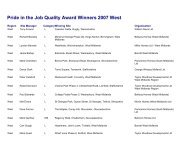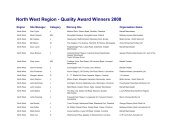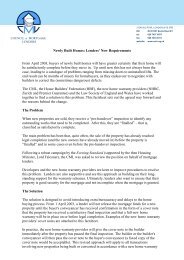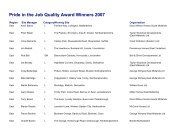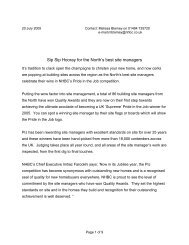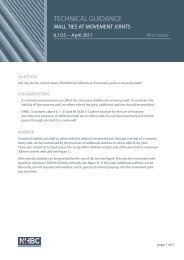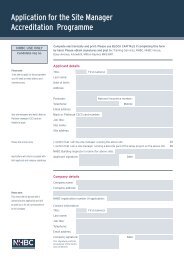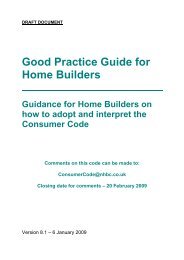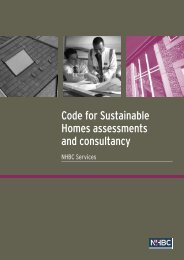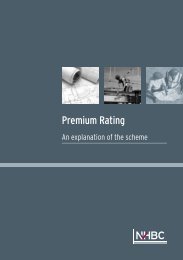June 2010 - NHBC Home
June 2010 - NHBC Home
June 2010 - NHBC Home
You also want an ePaper? Increase the reach of your titles
YUMPU automatically turns print PDFs into web optimized ePapers that Google loves.
Issue 47<br />
<strong>June</strong> <strong>2010</strong><br />
Have you heard the one about plasterboard ceilings<br />
making a cracking noise?<br />
This is no joke, but along with a number of house builders, <strong>NHBC</strong> has become aware that under certain circumstances<br />
a cracking noise appears to come from plasterboard ceilings. Ceilings can be to floors or the underside of a roof void.<br />
Although this sounds trivial, homeowners who have experienced the problem are not laughing. It is annoying to say<br />
the least and because it can happen during the night it can break sleep patterns and generate associated problems.<br />
As far as we are aware the number of such incidents is very small but we would like to know about as many as possible.<br />
This can then be fed into the work that has already been done to try to understand where and why it happens.<br />
If you have had the problem we would like to hear from you. Please contact <strong>NHBC</strong> Standards and Technical on<br />
0844 633 1000 or by email technical@nhbc.co.uk<br />
Three new Approved Documents<br />
Three new Approved Documents have recently been published and this article explains<br />
what has changed and the implications for house builders. All three become operative<br />
from 1 October <strong>2010</strong>, and will apply to works from this date, unless work has already<br />
started on site, or a formal application is submitted prior to this date, with the<br />
requirement that works start on site before 1 October 2011.<br />
Part L <strong>2010</strong> – Conservation of<br />
fuel and power<br />
Introduction<br />
The new Part L <strong>2010</strong> brings with it<br />
the next step towards the challenge<br />
of zero carbon homes. Structured to<br />
deliver a 25% improvement in thermal<br />
performance and energy efficiency<br />
on the outgoing 2006 document,<br />
similar to current Code Level 3 energy<br />
performance requirements for new<br />
dwellings, the changes will bring<br />
significant challenges particularly for<br />
developments including flats.<br />
The following headline issues address<br />
the principle changes and assess<br />
the implications for developments to<br />
meet the new Approved Document<br />
requirements.<br />
5



